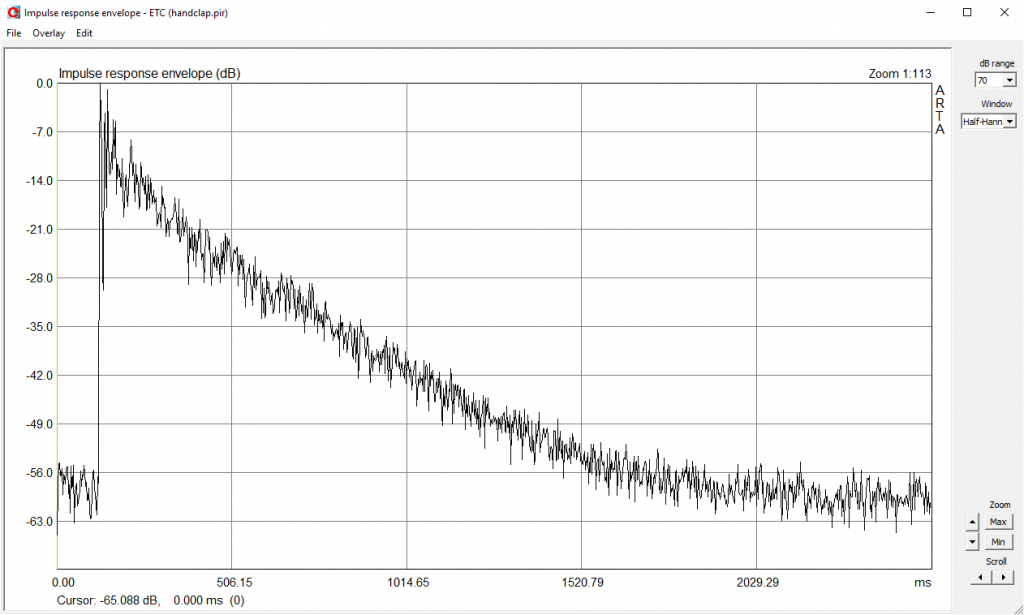On-Site RIR Survey
Site Survey: Room Impulse Response (RIR)
Preparations for this fall’s Making Wireless Work seminar are underway. Our members wanted an east coast event. Based on recommendations from the seminar staff and others, the site is Newark, NJ. There is a major airport nearby, local mass transit, and good access from the East coast rail system.
We were in Newark last month conducting Sound Reinforcement for Technicians and took the opportunity to do an informal site survey of the hotel and area. So, how much info can you get, armed with only an iPhone?
The Area
Below is a photo of the area. The Robert Treat hotel is just to the left of the blue sign. This is the seminar site. The New Jersey Performing Arts Center (NJPAC) is just to the right of the sign.

Photo 1 – Downtown Newark has undergone extensive renovation in recent years. The area has green space, coffee shops, and restaurants.
The Room
We have reserved one third of the ballroom for the event. Since the dividers have an air gap at the bottom, and not well isolated acoustically, they will not rent out the other two sections. They will give us use of the other two sections if we need them. One of the divider walls was up during our visit. The panoramic photo below shows the smaller of the two spaces (1/3 of the entire ballroom).
Photo 2 – Interior of the sub-divided ballroom. The photo was made under low-light conditions with the iPhone hand held. The app was Panorama 360.
The Acoustics
It’s an audio class, so of course we care about the acoustics of the space. I did some room impulse response (RIR) measurements (okay, they were hand claps!) of both spaces. Here is what the larger space sounds like. File 1 is a recording made on the iPhone using the FiRe app. Note my inability to produce a consistent hand clap. The noise floor of this space was not ideal, but workable.
Audio File 1 – Hand-clap recorded in the larger space.
File 2 is the best hand-clap of a series extracted from a wave file recording made in the smaller of the two spaces (1/3 of the total ballroom). Since this is where the presentations will be made, I analyzed it further for some acoustic measures. Note the lower noise floor compared to File 1.
Audio File 2 – A hand-clap recorded in the smaller space.
You may download the file here to conduct your own analysis. Figure 1 is the ETC of the hand-clap. Also shown are the 1/1-oct reverb times, computed from the ETC. The room was very quiet so the hand-clap produced a decent RIR. A hierarchy of room test methods might be as follows, in order of preference.
Source: 1. Log-sine sweep/dodec loudspeaker, 2. Balloon pop, 3. Hand-clap
Receiver: 1. A-Format mic/recorder, 2. Stereo/mono recorder, 3. Smartphone
In the measurement world you often take what you can get. The smartphone/hand-clap combo, while not ideal, produced a data set that was far better than nothing. It revealed that the room is live enough to justify the use of a beam-steered line array for the event.
Figure 1 – Broadband ETC of the space. The WAV file recording was opened in ARTA for analysis.
Figure 2 – 1/1-oct RT. Note that a hand-clap has very little energy, so I don’t fully trust the lower octave bands.



